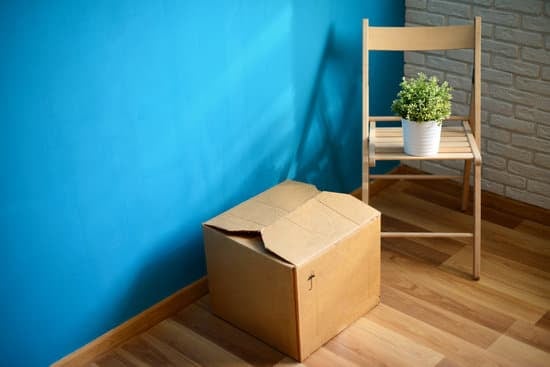Estimating home improvements is a crucial step in any renovation project, as it sets the foundation for a successful and cost-effective endeavor. Setting a budget before diving into any home improvement project is essential to avoid financial pitfalls and ensure that the desired upgrades are achievable within the allocated funds. In this blog post, we aim to guide our readers on how to accurately estimate the cost of their home improvements, providing valuable insights and tips along the way.
Before embarking on any home improvement project, it is imperative to assess the scope of the work that needs to be done. By carefully evaluating what areas of your home require attention and creating a detailed list of necessary improvements, you can prioritize projects based on urgency and budget constraints.
Researching costs of materials and labor in your area is also key in determining an accurate estimate. Utilizing online resources, visiting local hardware stores, and seeking quotes from professionals will provide insight into realistic costs for your project.
Creating a comprehensive budget for your home improvement endeavor is crucial for keeping expenses in check. Factoring in unexpected expenses and allocating funds for different aspects of the project will help prevent overspending. When estimating labor costs, consider factors such as project complexity and location to come up with realistic figures.
Similarly, understanding how to estimate material costs based on quality versus affordability will aid in crafting a budget that meets your needs. By following these steps and incorporating contingency planning into your budget, you can finalize an accurate estimate for your home improvement project while staying within financial boundaries.
Assessing the Scope of the Project
When embarking on a home improvement project, one of the crucial first steps is to carefully assess the scope of the work that needs to be done. By doing so, you can effectively plan and budget for each aspect of the project. To help you navigate through this process, here are some essential tips on how to estimate home improvements:
1. Evaluate what needs to be done: Start by conducting a thorough evaluation of your home to identify areas that require improvement. This could range from simple cosmetic upgrades like painting walls or replacing fixtures, to more complex renovations such as kitchen remodels or roof replacements.
2. Make a detailed list: Once you have identified all necessary improvements, make a detailed list of each task that needs to be completed. This will help you stay organized and ensure that no aspect of the project gets overlooked. Consider creating a checklist with prioritized items based on urgency and budget constraints.
3. Prioritize projects: With your list in hand, prioritize tasks based on their significance and impact on your daily life. Consider factors such as safety concerns, functionality, and aesthetics when deciding which projects to tackle first. By establishing clear priorities, you can focus your time and resources on the most critical aspects of your home improvement project.
By carefully assessing the scope of your home improvement project and creating a detailed plan, you can set yourself up for a successful renovation experience. Remember that proper planning is key to staying within budget and avoiding unnecessary expenses along the way. Stay tuned for our next section on researching costs to further guide you on how to estimate home improvements effectively.
Researching Costs
When it comes to home improvements, one of the crucial steps in the estimation process is researching costs. Knowing how to estimate home improvements accurately requires gathering information on the prices of materials and labor in your area. By investing time in this research phase, homeowners can avoid unexpected expenses and create a realistic budget for their projects.
To begin the research process, consider utilizing online resources such as home improvement websites or cost estimation tools. These tools can provide a general idea of the average costs associated with different types of projects. Additionally, visiting local hardware stores and speaking to professionals in the field can offer valuable insights into current market prices.
Another effective way to research costs is by obtaining multiple quotes from contractors or service providers. By comparing these quotes, homeowners can gain a better understanding of the price range for their project and choose the option that best fits their budget. Remember that while cost is important, it’s also essential to consider factors like quality and reputation when selecting a contractor.
Moreover, keep in mind that prices may vary depending on your location and the specific requirements of your project. Understanding these nuances through thorough research will enable you to make informed decisions when estimating home improvements. By taking the time to research costs diligently, you can set a realistic budget and ensure a smoother renovation process overall.
| Research Method | Advantages |
|---|---|
| Online Resources | Quick access to general cost estimates |
| Local Hardware Stores | Insights into current market prices and trends |
| Obtaining Multiple Quotes | Allows for price comparison and selection based on budget and quality |
Creating a Detailed Budget
When it comes to embarking on a home improvement project, one of the most crucial steps is creating a detailed budget. Having a comprehensive budget in place helps ensure that you stay on track financially and can complete the project successfully. In this section, we will delve into how to create a detailed budget for your home improvement project.
Factoring in All Expenses
To start, it is essential to identify and list down all potential expenses associated with the home improvement project. This includes not only material and labor costs but also any permits, equipment rentals, or miscellaneous expenses that may arise during the project. By accounting for all possible expenditures, you can avoid unexpected financial setbacks along the way.
Allocating Funds Proportionately
Once you have outlined all expenses, it’s time to allocate funds proportionately to each aspect of the project. Determine how much you are willing to spend on materials versus labor, and be sure to set aside some funds for contingency purposes. By allocating funds wisely, you can prioritize where your money goes and ensure that each part of the project receives adequate funding.
Adjusting for Unexpected Costs
No matter how well you plan, unexpected costs are bound to arise during a home improvement project. It’s crucial to include a contingency fund in your budget to account for these unforeseen expenses.
Whether it’s uncovering hidden damage or facing delays due to weather conditions, having extra funds set aside can help prevent financial strain and keep the project moving forward smoothly. Be prepared to adjust your budget as needed throughout the project to accommodate any surprises that may come your way.
By following these guidelines and creating a detailed budget for your home improvement project, you’ll be better equipped to handle costs effectively and complete your renovation with peace of mind. Remember that estimating home improvements accurately from the start can save you time, money, and stress in the long run.
Estimating Labor Costs
Breaking Down the Process
Estimating labor costs for home improvement projects can be a crucial aspect of setting a realistic budget. One way to approach this is by breaking down the process based on the type of project you are planning.
For example, simple tasks like painting or minor repairs may have a straightforward estimation process, while more complex projects like remodeling a kitchen or bathroom may require more detailed calculations. By understanding the scope of the labor involved in each task, you can better estimate the associated costs.
Factors Influencing Labor Costs
Several factors can influence labor costs for home improvements, including the complexity of the project and your location. Projects that require specialized skills or tools may come with higher labor costs, as contractors or professionals may need to charge more for their expertise.
Additionally, labor rates can vary depending on where you are located geographically. It’s essential to research average labor rates in your area to get a better idea of what to expect when estimating labor costs for your project.
Calculating Labor Costs
When it comes to calculating labor costs for your home improvement project, there are a few methods you can use. Some professionals charge an hourly rate for their services, so estimating based on the number of hours needed for each task is one approach.
Alternatively, you may receive project-based estimates from contractors or companies that provide a flat fee for completing specific projects. By evaluating these different pricing structures and comparing quotes from multiple sources, you can determine a reasonable estimate for your project’s labor costs.
By following these guidelines on how to estimate labor costs accurately, you can better plan and budget for your home improvement projects. Remember to take into account all aspects of the labor involved, from basic tasks to more intricate renovations, and always leave room in your budget for unexpected expenses that may arise during the project. A well-thought-out estimate will not only help you stay within budget but also ensure a smoother and successful home improvement experience overall.
Estimating Material Costs
Researching material costs can be done through various channels such as visiting local hardware stores, browsing online suppliers, and seeking recommendations from professionals in the field. By gathering quotes from multiple sources, homeowners can compare prices and identify the most cost-effective options without compromising quality. Additionally, considering factors like delivery costs and potential discounts can further help in estimating material expenses accurately.
When estimating material costs, it’s important to strike a balance between quality and affordability. While opting for cheaper materials may seem like a cost-saving measure initially, it could lead to higher maintenance expenses in the long run. Homeowners should aim to choose materials that offer durability and aesthetics within their budget constraints. By factoring in all these considerations while estimating material costs, individuals can ensure that their home improvement project stays within budget while achieving desired results.
| Research Materials | Compare Prices |
|---|---|
| Visit local hardware stores | Gather quotes from multiple sources |
| Browse online suppliers | Identify cost-effective options |
| Seek recommendations from professionals | Consider delivery costs and discounts |
Contingency Planning
When embarking on a home improvement project, it is essential to include contingency planning in your budget. Unforeseen expenses can arise during any renovation or construction work, and having a separate fund set aside for these unexpected costs can save you from financial strain in the long run. Here are some tips on how to incorporate contingency planning into your estimates:
- Highlight the Importance: The first step in contingency planning is recognizing its importance. Whether it’s a hidden structural issue, unexpected permit fees, or delays due to inclement weather, unforeseen circumstances can significantly impact your budget. By setting aside a percentage of your total estimated costs for contingencies, you can better prepare for any surprises that may come your way.
- Examples of Common Surprises: To better understand the need for a contingency fund, consider common surprises that homeowners often encounter during home improvement projects. These could include discovering mold or water damage behind walls, electrical wiring that needs upgrading to meet code requirements, or even delays in material deliveries leading to project timeline extensions.
- Adjusting Budget and Timeline: In the event that you do encounter unexpected expenses during your home improvement project, be prepared to adjust your budget and timeline accordingly. Having a contingency fund in place allows you the flexibility to address these additional costs without compromising the overall quality of your project. It’s essential to stay flexible and adapt as needed throughout the renovation process.
By including contingency planning in your estimate for home improvements, you can ensure that you are financially prepared for any surprises that may arise. Remember to always expect the unexpected when it comes to renovations and allocate a reasonable percentage of your budget towards unforeseen expenses. With proper planning and preparation, you can navigate through challenges more smoothly and complete your project with peace of mind.
Finalizing the Estimate
Estimating home improvements is a crucial step in any renovation project, as it allows homeowners to set a realistic budget and avoid unexpected costs down the road. Finalizing the estimate involves combining labor and material costs to come up with a comprehensive budget for the project. By accurately estimating these expenses, homeowners can ensure that they have enough funds to complete their desired renovations without breaking the bank.
To finalize the estimate for your home improvement project, start by gathering all the necessary information on labor and material costs. This includes obtaining quotes from various contractors for labor expenses and researching the prices of materials needed for the renovation. Make sure to factor in any additional costs such as delivery fees or permit expenses to get a true picture of the total project cost.
Once you have collected all the necessary data, it’s time to create a detailed budget that outlines how much you plan to spend on labor, materials, and any other associated costs. This budget will serve as a roadmap for your home improvement project, helping you stay on track financially throughout the renovation process.
Be sure to review your budget carefully and make adjustments as needed to ensure that you have allocated enough funds for each aspect of the project. If you are unsure about any part of the estimate, don’t hesitate to seek professional advice to ensure accuracy in your planning.
Conclusion
Estimating home improvements is a crucial step in ensuring the success of any project. By setting a budget and accurately predicting costs, homeowners can avoid financial strain and unexpected expenses along the way. Throughout this blog post, we have covered various aspects of how to estimate home improvements effectively, from assessing the scope of the project to creating a detailed budget, estimating labor and material costs, and planning for contingencies.
One of the key takeaways from this discussion is the importance of thorough research and planning before diving into a home improvement project. By carefully evaluating what needs to be done, researching costs, and creating a comprehensive budget that includes contingency funds, homeowners can navigate their projects with confidence. It is essential to prioritize tasks based on urgency and budget constraints while also considering factors that may influence labor and material costs.
In conclusion, accurate estimation is vital for the success of any home improvement project. By following the steps outlined in this blog post on how to estimate home improvements, readers will be better equipped to take control of their budget and navigate their projects smoothly.
Remember, when in doubt or unsure about any aspect of the estimate, seek professional advice to ensure a successful outcome. Take charge of your home improvement projects by estimating costs effectively and turning your vision into reality within your means.
Frequently Asked Questions
What Is the 30% Rule for Renovations?
The 30% rule for renovations is a guideline that suggests allocating around 30% of the current market value of your home towards renovation projects. This rule helps homeowners set a budget that aligns with the potential increase in property value post-renovation.
How Do You Calculate the Cost of a Home Renovation?
Calculating the cost of a home renovation involves considering factors such as labor, materials, permits, and unexpected expenses. To get an estimate, you can break down each component, obtain quotes from contractors, research material costs, and factor in a buffer for contingencies.
Is $100 000 Enough to Renovate a House?
Whether $100,000 is enough to renovate a house depends on various factors such as the size of the property, scope of renovations, location, labor costs, and materials chosen. In some cases, $100,000 may be sufficient for cosmetic updates but may fall short for extensive structural changes.

I’m thrilled to have you here as a part of the Remodeling Top community. This is where my journey as an architect and remodeling enthusiast intersects with your passion for transforming houses into dream homes.





